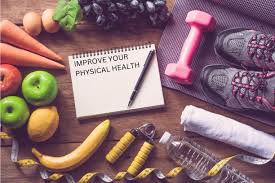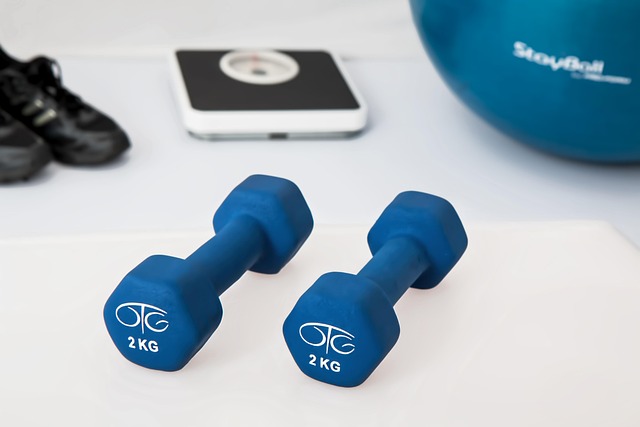Introduction
In an era dominated by sedentary lifestyles and screen time, fitness and exercise have emerged as non-negotiable pillars of holistic health. Regular physical activity isn’t just about sculpting a toned physique—it’s a powerful tool to combat chronic diseases, boost mental clarity, and enhance longevity. Whether you’re a seasoned athlete or a beginner, understanding the science, strategies, and myths surrounding fitness can revolutionize your journey. This guide dives deep into actionable insights, debunks common misconceptions, and equips you with the knowledge to build a sustainable routine.
The Science Behind Fitness and Exercise
How Exercise Impacts the Body
Exercise triggers a cascade of physiological changes. When you move, your muscles demand more oxygen, prompting your heart to pump faster and your lungs to work harder. Over time, this strengthens your cardiovascular system. Additionally, physical activity stimulates the release of endorphins—your body’s natural mood enhancers—reducing stress and anxiety.
The Role of Metabolism in Fitness
Your metabolism isn’t static. Regular exercise, especially strength training, increases muscle mass, which elevates your basal metabolic rate (BMR). Think of it like upgrading a car engine: more muscle means your body burns more calories even at rest.
Cardiovascular Health and Exercise
Aerobic exercises like running, cycling, or swimming improve heart efficiency. Studies show that 150 minutes of moderate cardio weekly can reduce the risk of heart disease by 35%. It also enhances blood circulation, lowering blood pressure and bad cholesterol (LDL).
Types of Exercise: Finding What Works for You
Cardiovascular Exercise
Cardio is the cornerstone of endurance. Activities like brisk walking, dancing, or HIIT (High-Intensity Interval Training) boost heart health and stamina. Pro Tip: Aim for 30 minutes daily, five days a week.
Strength Training
Lifting weights or using resistance bands builds lean muscle. Compound movements like squats and deadlifts engage multiple muscle groups, maximizing efficiency. Did You Know? Muscle burns three times more calories than fat.
Flexibility and Mobility Workouts
Yoga and Pilates improve flexibility, reduce injury risk, and enhance posture. Spend 10–15 minutes stretching post-workout to maintain joint health.
Balance and Stability Training
Tai Chi or single-leg exercises enhance balance, crucial for aging populations. Try standing on one leg while brushing your teeth!
Creating a Personalized Fitness Plan
Setting Realistic Fitness Goals
SMART goals (Specific, Measurable, Achievable, Relevant, Time-bound) keep you accountable. Instead of “I want to lose weight,” try “I’ll lose 5 pounds in 8 weeks by jogging three times weekly.”
Assessing Your Current Fitness Level
Take baseline measurements: resting heart rate, BMI, or a 1-mile walk test. Apps like MyFitnessPal can track progress.
Designing a Weekly Workout Schedule
Balance cardio, strength, and recovery. Example:
- Monday: HIIT (20 mins) + Core
- Wednesday: Strength Training (Upper Body)
- Friday: Yoga + Mobility
- Saturday: Long Walk or Swim
Common Fitness Myths Debunked
Myth 1: Spot Reduction for Fat Loss
Doing crunches won’t melt belly fat. Fat loss is systemic—your body decides where to shed first. Combine cardio, strength training, and a caloric deficit for overall results.
Myth 2: No Pain, No Gain
While effort is essential, pain signals injury. Distinguish between muscle fatigue (a burning sensation) and sharp pain.
Myth 3: Cardio is the Only Way to Lose Weight
Strength training builds muscle, which accelerates metabolism. A mix of both yields optimal fat loss.
Nutrition and Exercise: The Dynamic Duo
The Importance of a Balanced Diet
Fuel workouts with complex carbs (oats, quinoa), lean proteins (chicken, tofu), and healthy fats (avocado, nuts). Avoid processed sugars pre-workout to prevent energy crashes.
Pre- and Post-Workout Nutrition Tips
- Pre-Workout: Banana + almond butter (30 mins prior).
- Post-Workout: Protein shake + sweet potato (within 45 mins).
Hydration: The Often-Overlooked Component
Dehydration reduces performance by 20%. Drink 500ml water 2 hours before exercising and sip during workouts.
Staying Motivated: Overcoming Plateaus and Setbacks
Tracking Progress Effectively
Use a journal or app to log workouts, mood, and measurements. Celebrate non-scale victories like improved sleep or stamina.
Incorporating Variety to Avoid Boredom
Swap running for cycling, join a dance class, or try rock climbing. Novelty keeps the brain engaged.
Seeking Support from Communities or Professionals
Join online fitness groups or hire a trainer for accountability. Social support increases adherence by 40%.
Frequently Asked Questions (FAQs)
1. How much exercise do I need each week?
The WHO recommends 150 minutes of moderate aerobic activity or 75 minutes of vigorous activity, plus two strength sessions.
2. What’s the best time of day to work out?
It’s personal! Morning workouts boost metabolism, while evening sessions leverage peak muscle strength.
3. Can I build muscle without weights?
Yes! Bodyweight exercises (push-ups, planks) and resistance bands are effective alternatives.
4. How do I calculate my target heart rate?
Formula: 220 – Your Age = Max Heart Rate (MHR). Target zone: 60–80% of MHR.
Example: For a 30-year-old, MHR = 190. Target = 114–152 BPM.
5. Is it possible to overtrain?
Absolutely. Symptoms include fatigue, insomnia, and irritability. Rest 1–2 days weekly and prioritize sleep.
Conclusion
Fitness isn’t a destination—it’s a lifelong journey. By understanding your body, debunking myths, and crafting a balanced plan, you’ll unlock unprecedented energy and vitality. Start small, stay consistent, and remember: every step counts. Ready to transform? Lace up those sneakers and take the first step today!


